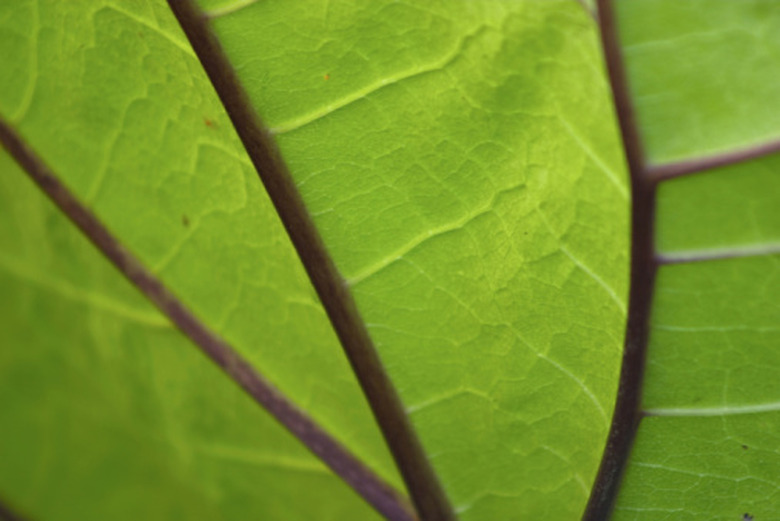Units Used To Measure Chlorophyll
Plants, algae and various phytoplankton contain chlorophyll within their cells. This vital part of the cells' molecular composition controls the photosynthesis process within the organism or plant. Researchers often test chlorophyll levels in samples of surface water from lakes, rivers and streams, as well as in plant life. Test results indicate the current conditions and nutrient levels that are influencing the sample.
Why Measure Chlorophyll
Why Measure Chlorophyll
Measuring the levels of chlorophyll helps to determine the state of an organism and water quality. High levels of chlorophyll usually indicate that the sample is high in nutrients, usually nitrogen and phosphorous. Abnormally low levels of chlorophyll would indicate possible pollution, septic system leakage or runoff in the area. Usually samples are collected and compared over time to track changes in the sample area.
Lab Testing
Lab Testing
Spectrophotometry and high-performance liquid chromatography (HPLC) are two methods used to measure the quantity of chlorophyll in a sample of water. Water is collected and filtered to isolate chlorophyll-containing organisms. The cells of these organisms are ruptured to extract the chlorophyll. The collected sample is placed in an acetone solution. The sample is either analyzed by spectrophotometry or the HPLC method. Spectrophotometry involves looking at the absorbency or fluorescent properties of the chlorophyll. The sample also may be analyzed by the HPLC method. The two lab methods of testing are measuring the sample's fluorescing capabilities. The samples are exposed to a certain wavelength of light (usually 663 and 645 nm), which makes the chlorophyll react by emitting a higher wavelength.
Meter Measuring
Meter Measuring
You can use a meter to test chlorophyll levels, usually of live plants. Two LED lights shine on the surface of the sample, most likely a plant leaf. The red LED light has a peak wavelength of 650 nm and infrared LED at a peak of 940 nm. Part of the light is absorbed by the chlorophyll; the rest is absorbed throughout the sample. The proportion of chlorophyll to other measures of the sample is calculated within the meter and is displayed as an arbitrary unit between 0 and 199.
Units
Units
The chlorophyll levels are determined by any of the three methods and designated as a percentage or concentration level compared to the whole sample.
Cite This Article
MLA
Revermann, Susan. "Units Used To Measure Chlorophyll" sciencing.com, https://www.sciencing.com/units-used-measure-chlorophyll-8586683/. 24 April 2017.
APA
Revermann, Susan. (2017, April 24). Units Used To Measure Chlorophyll. sciencing.com. Retrieved from https://www.sciencing.com/units-used-measure-chlorophyll-8586683/
Chicago
Revermann, Susan. Units Used To Measure Chlorophyll last modified March 24, 2022. https://www.sciencing.com/units-used-measure-chlorophyll-8586683/
